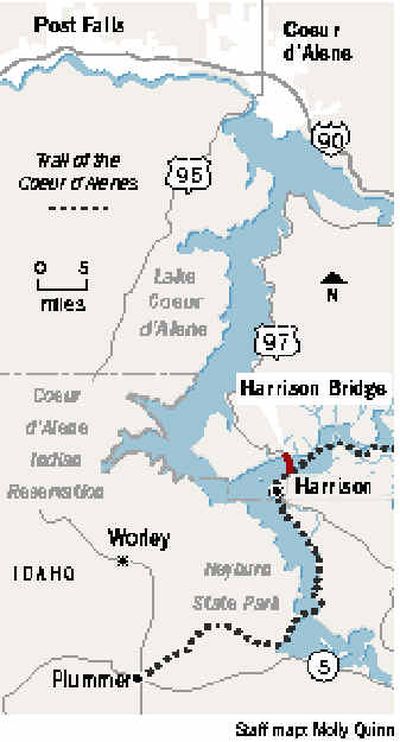Emergency repairs approved for bridge

BOISE — Idaho’s state transportation board has approved a quarter-million dollars in emergency repairs to a bridge over the Coeur d’Alene River at Harrison, but the 74-year-old bridge still may be restricted to one lane of traffic.
“Our goal is to develop and implement a repair plan as soon as possible,” said Scott Stokes, district engineer for the Idaho Transportation Department. “The decision to restrict traffic on the bridge was not made lightly. But the safety and well-being of the traveling public is our highest priority.”
After a routine inspection found broken beams, crushed timbers and seriously deteriorated pilings, the old bridge was restricted two weeks ago to vehicles under 10,000 pounds. That allows for just a single lane of passenger cars or light trucks. Flaggers were called in, and then a traffic signal was installed to regulate traffic on the bridge, so the direction of travel can alternate.
But the weight limit is so low that most school buses, firetrucks and snowplows currently couldn’t cross the bridge.
“The emergency repairs that can be done will give us some breathing room while the new bridge is designed and built,” said John McHugh of Post Falls, the North Idaho representative on the state Transportation Board. “At the same time, having higher load limits is crucial to the healthy economic climate in Harrison.”
The bridge, located on State Highway 97 between mileposts 69 and 70, carries an average traffic load of 670 vehicles a day. To detour around it requires a 15-mile roundabout that takes traffic over another bridge with a similar narrow steel truss structure.
The old bridge is currently scheduled to be replaced in 2006 at a cost of $8.1 million, but engineers are recommending that project be moved up to next summer.
“The Transportation Department is working to move the construction of the new bridge up one full construction season,” said Jeff Stratten, ITD spokesman, “and will propose it to the Transportation Board when it looks at the construction program in September.”
The Harrison Bridge has been inspected annually because of its age, but this month’s inspection was more in-depth, thanks to a new, light-weight inspection vehicle called a “Snooper” truck. The department began using the new truck because older inspection vehicles often exceeded weight limits on aging bridges, making their use impractical.
Stratten said no time frame has been set for the emergency repairs, but they’re being developed as quickly as possible. Engineers hope to strengthen the structure to the point that the load limit can be doubled to 10 tons to allow for emergency vehicles, school buses and snowplows.
Stokes said that while the first round of repairs is being completed, the department will continue to look at additional repairs that could further increase the weight limit. The bridge carries additional tourist and recreational traffic in summer, he said.
The Harrison Bridge is the first project to be funded this year under the Transportation Department’s unallocated program, which set aside $2 million for emergency road and bridge repairs over the next year.